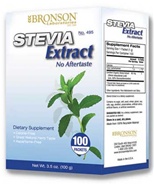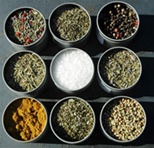
Declare War On Sugar!

Dangers of Artificial Sweeteners
Dangers of Artificial Sweeteners
Artificial Sweetener: Debunking the Myths
There were controversies encircling artificial sweeteners over the last 30-years, it is generally utilized by dieters to reduce calories, diabetics to reduce carbohydrates and food producers to meet the needs of their consumers……Read more…
Fructose and Sucrose Mythbusters
Fructose and sucrose are two very common types of sugar that play a huge role in the average person’s diet. Fructose is found naturally in fruit, such as apples, watermelons, and bananas. Sucrose is found in most sweet processed foods, such as candy, cookies, and..Read more…

Artificial Sweeteners List
Artificial Sweeteners List
There are many artificial sweeteners for people with diabetes to choose. As far as people with diabetes are concerned, the purpose of artificial sweeteners is to safely replace sugar (sucrose). Replacing sugar with chemicals that do not raise diabetics’ blood sugar safely is all that matters.
If an engineering process was used to change elements of a sweetener at the molecular level, then you can call the result artificial. A manufacturing process starts with sugar and runs it through a series of engineering processes and creates sucralose (Splenda). That is an artificial sweetener that tastes and acts like sugar without effecting a person’s blood sugar.
The Different Types of Natural and Artificial Sweeteners
Diabetics use several types of sweeteners as sugar alternatives. These sweeteners are sometimes natural, such as Stevia and fruit juice. Other sweeteners are man-made, such as Aspartame (as-per-teym) and Splenda. Different sweeteners are often used in different ways. For example, Aspartame is frequently used in diet beverages whereas Splenda is most often used in prepared foods and by the teaspoon. Read more…
Artificial Sweetener: Debunking The Myths
There were controversies encircling Artificial Sweetener over the last 30-years, it is generally utilized by dieters to reduce calories, diabetic to reduce carbohydrates and food producers to meet the needs of their consumers… Read more…
High Fructose Corn Syrup
Utilization of High Fructose Corn Syrup has sharply risen in the USA since 1970s. It has become the primary sweetener found in carbonated drinks, plus it’s widely used in manufactured food because of its sweetness, consistency and additive qualities…. Read more…

All Types of Herbs
All Types of Herbs
Goldenseal is a plant that grows wild in parts of the United States but has become endangered by overharvesting. With natural supplies dwindling, goldenseal is now grown commercially across the United States, especially in the Blue Ridge Mountains. Read more…
Valerian is an herbal plant, which is considered as native to Europe and Asia; it is also found in areas in North America. The roots of valerian (underground stems) are typically used to make health supplements, such as capsules, oral tablets, liquid medicines, and teas. Read more…
Common Names–St. John’s wort, hypericum, Klamath weed, goat weed. Read more…
Saw palmetto grows in the southern United States. Common Names–saw palmetto, American dwarf palm tree, cabbage palm. Read more…
Like peas and beans, red clover belongs to the family of plants called legumes. Red clover contains phytoestrogens–compounds similar to the female hormone estrogen. Read more…
Milk thistle is a plant that is native to the Mediterranean region. It has been used for thousands of years as a remedy for a variety of ailments, especially liver problems. Read more…
Most licorice is grown in Greece, Turkey, and Asia. Licorice contains a compound called glycyrrhizin (or glycyrrhizic acid).
Common Names–licorice root, licorice, liquorice, sweet root, gan zao (Chinese licorice) Read more…
Kava is native to the islands of the South Pacific and is a member of the pepper family.
Common Names–kava kava, awa, kava pepper
Latin Names–Piper methysticum Read more…
Horse chestnut trees are native to the Balkan Peninsula (for example, Greece and Bulgaria), but grow throughout the northern hemisphere. Although horse chestnut is sometimes called buckeye, it should not be confused with the Ohio or California buckeye trees, which are related but not the same species. Read more…
Hawthorn is a spiny, flowering shrub or small tree of the rose family. The species of hawthorn discussed here are native to northern European regions and grow throughout the world. Read more…
All types of tea (green, black, and oolong) are produced from the Camellia sinensis plant using different methods. Fresh leaves from the Camellia sinensis plant are steamed to produce green tea. Read more…
The ginkgo tree is one of the oldest types of trees in the world.
Common Names–ginkgo, ginkgo biloba, fossil tree, maidenhair tree, Japanese silver apricot, baiguo, bai guo ye, kew tree, yinhsing (yin-hsing) Read more…
Ginger is a tropical plant that has green-purple flowers and an aromatic underground stem (called a rhizome). It is commonly used for cooking and medicinal purposes. Read more…
Garlic is the edible bulb from a plant in the lily family. It has been used as both a medicine and a spice for thousands of years. Read more…
Flaxseed is the seed of the flax plant, which is believed to have originated in Egypt. It grows throughout Canada and the northwestern United States. Flaxseed oil comes from flaxseeds. Read more…
Originally a plant native to the Balkan mountains of Eastern Europe, feverfew now grows throughout Europe, North America, and South America. Read more…
Evening primrose is a plant native to North America, but it grows in Europe and parts of the Southern hemisphere as well. It has yellow flowers that bloom in the evening. Evening primrose oil contains gamma-linolenic acid (GLA), an essential fatty acid. Essential fatty acids are required by the body for growth and development, and must be obtained from the diet.
Read more…
European mistletoe is a semiparasitic plant that grows on several types of trees in temperate regions worldwide. Where the term “mistletoe” is used in this fact sheet, it refers to European mistletoe. (European mistletoe is different from American mistletoe, which is used as a holiday decoration.) Read more…
Ephedra is an evergreen shrub-like plant native to Central Asia and Mongolia. The principal active ingredient, ephedrine, is a compound that can powerfully stimulate the nervous system and heart. Read more…
There are nine known species of echinacea, all of which are native to the United States and southern Canada. The most commonly used, Echinacea purpurea, is believed to be the most potent. Read more…
Dandelion greens are edible and a rich source of vitamin A.
Common Names–lion’s tooth, blowball
Latin Name–Taraxacum officinale Read more…
Cranberries are the fruit of a native plant of North America. These red berries are used in foods and in herbal products.
Common Names–cranberry, American cranberry, bog cranberry
Latin Name–Vaccinium macrocarpon Read more…
Chasteberry is the fruit of the chaste tree, a small shrub-like tree native to Central Asia and the Mediterranean region. The name is thought to come from a belief that the plant promoted chastity–it is reported that monks in the Middle Ages used chasteberry to decrease sexual desire. Read more…
Cat’s claw grows wild in many countries of Central and South America, especially in the Amazon rainforest.
Common Names–cat’s claw, u̱a de gato
Latin Names–Uncaria tomentosa, Uncaria guianensis Read more…
Black cohosh is a plant native to North America.
Common Names–black cohosh, black snakeroot, macrotys, bugbane, bugwort, rattleroot, rattleweed
Latin Names–Actaea racemosa, Cimicifuga racemosa Read more…
Bilberry is a relative of the blueberry, and its fruit is commonly used to make pies and jams. Bilberry grows in North America, Europe, and northern Asia. Read more…
Asian ginseng is native to China and Korea and has been used in various systems of medicine for many centuries. Asian ginseng is one of several types of true ginseng (another is American ginseng, Panax quinquefolius). An herb called Siberian ginseng or eleuthero (Eleutherococcus senticosus) is not a true ginseng. Read more…
Aloe vera’s use can be traced back 6,000 years to early Egyptian civilization, where the plant was depicted on stone carvings. Read more…


 make your own long list. There
make your own long list. There



Recent Comments